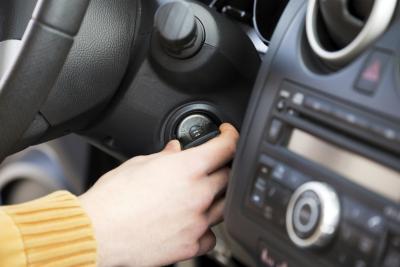The starting and charging system on vehicles can be tricky to diagnose. The battery has to put out enough amperage to turn the starter solenoid. The starter solenoid needs to turn the flywheel and the plunger to disengage once the engine cranks over. The alternator needs to replace the spent voltage the battery expelled to engage the starter. Bad connections, corroded wires or failed components can all lead to a no-start situation. But there is a way to tell if it's the battery, alternator or the starter.

Open the hood to the car and place a voltmeter onto the battery. Place the red positive lead to the positive battery terminal indicated by the + insignia stamped on the battery case. Place the negative lead of the voltmeter onto the negative battery terminal indicated by the - insignia stamped on the battery case. If the voltmeter indicates 12.4 volts or less, recharge or replace the battery before proceeding.

Inspect the battery terminal clamps for corrosion or looseness. Clean the terminals if necessary—but before disconnecting, place a memory saver into the power source outlet inside the vehicle.

Use a hand wrench to loosen the batter terminal clamps and then remove them. Clean the terminals with a terminal cleaner and wire brush. Replace and tighten the terminals.

Have an assistant turn the ignition key. Determine if there is a clicking sound when the ignition key is engaged and locate the component under the hood (or vehicle) making the noise. If the starter is making the clicking noise, check the wires connected to it for corrosion and looseness.

Use a hand wrench to loosen the retaining nuts holding the wire connections to the starter motor. Clean the blades of the connections with a wire brush and then reattach.

Have the assistant turn the ignition key. If a no-start or audible clicking is still present, have the assistant disengage the ignition key and turn on the headlights. Have the assistant engage the ignition key again while you look at the headlights. If they remain steady without dimming, the starter is most likely bad. If they dim low, the battery is most likely the culprit.

Remove the starter and bring it to an auto parts store to have it bench tested if the battery passed the headlight test. If the starter cannot be rebuilt, you'll need to replace it.
